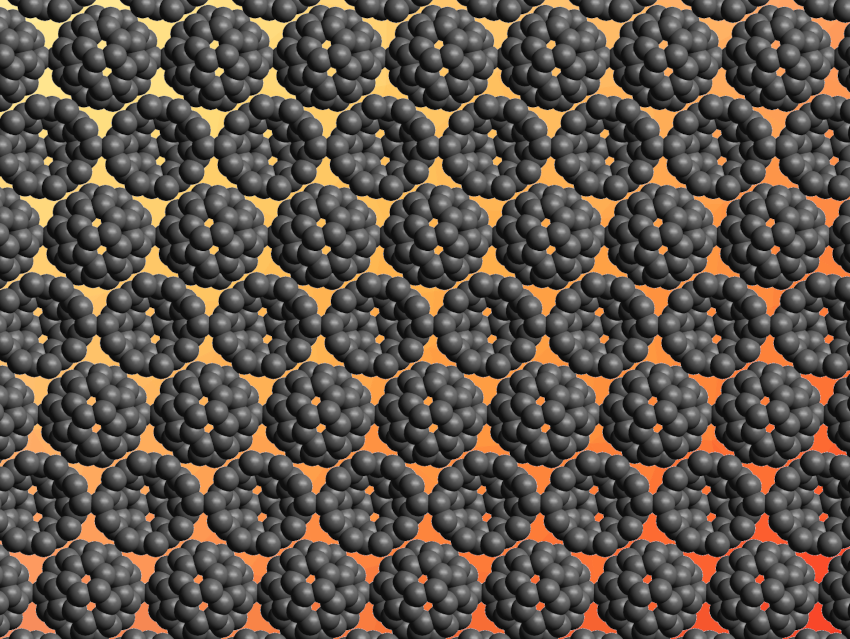Two-dimensional materials can have interesting and useful properties that differ from the corresponding 3D materials. 2D carbon materials, for example, can show diverse properties, including tunable bandgaps. Thus, they can have applications, e.g., in transistors or energy storage devices. The properties of 2D carbon materials are closely related to the structure, so the discovery of new 2D carbon allotropes is an interesting research target.
Jian Zheng, Beijing National Laboratory for Molecular Sciences, Chinese Academy of Sciences, and colleagues have synthesized 2D polymeric fullerene (C60), i.e., a two-dimensional material with covalent bonds between buckyballs. The team first prepared two different magnesium-intercalated bulk single crystals of polymeric C60, one in a closely packed quasi-hexagonal phase and the other in a quasi-tetragonal phase. The two phases were synthesized by adjusting the ratio of Mg and C60 and heating the resulting mixture to 500–580 °C in a vacuum-sealed quartz tube.
Exfoliation was then used to obtain monolayer polymeric C60 from the quasi-hexagonal bulk single crystals, while few-layer polymeric C60 was obtained from the quasi-tetragonal crystals. In the monolayer polymeric C60, the C60 clusters are covalently bonded with each other in a plane, forming a periodic, crystalline structure. The material is thermodynamically stable and has a moderate bandgap. With this bandgap, monolayer polymeric C60 falls in between zero-bandgap graphene and large-bandgap fullerene. The material could have applications in optoelectronics.
- Synthesis of a monolayer fullerene network,
Lingxiang Hou, Xueping Cui, Bo Guan, Shaozhi Wang, Ruian Li, Yunqi Liu, Daoben Zhu, Jian Zheng,
Nature 2022.
https://doi.org/10.1038/s41586-022-04771-5



